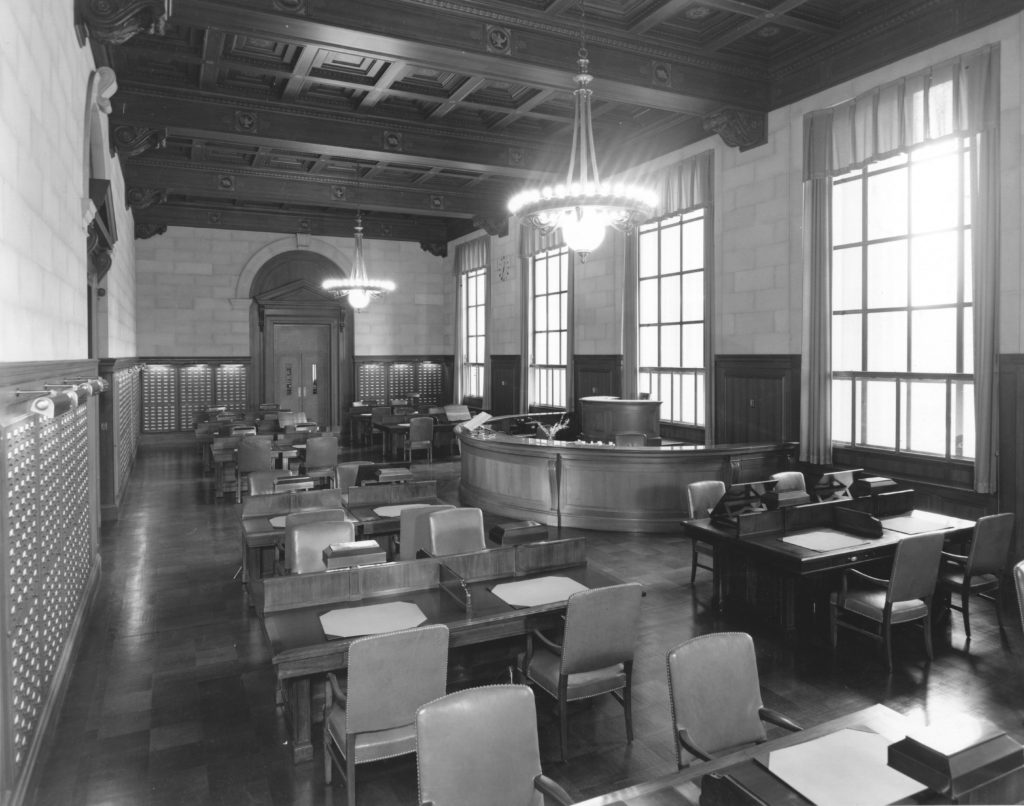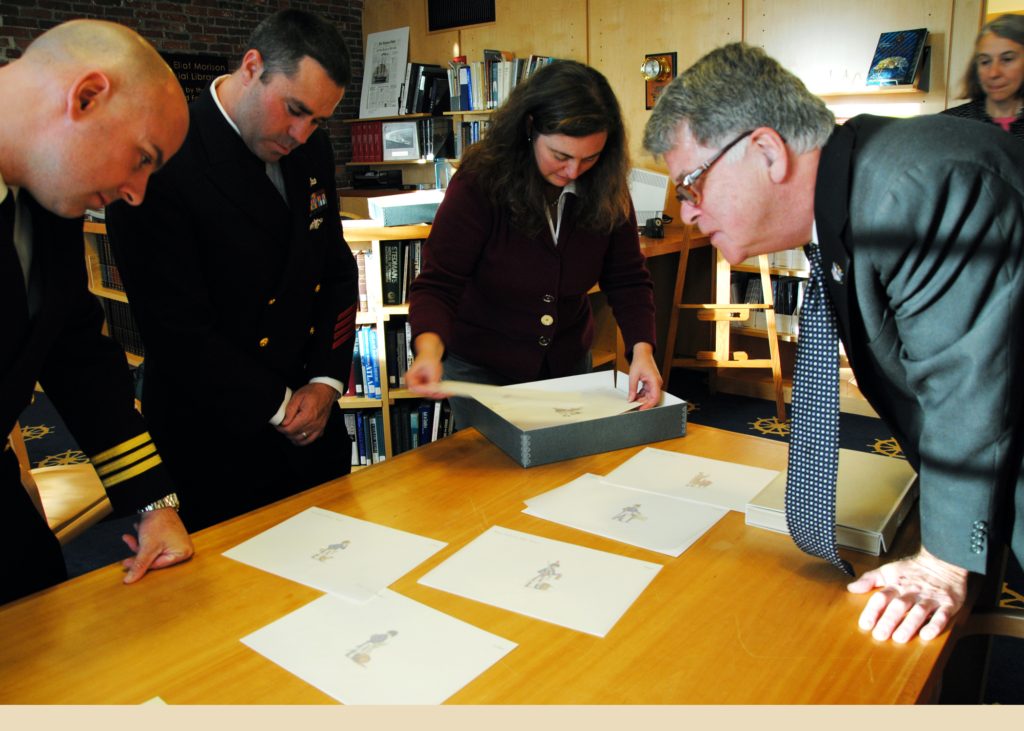Dara A. Baker
Assistant Editor for Archives
Digital Format Specialist, National Archives and Records Administration
Hello.
I am delighted to be back helming the International Journal of Naval History’s Inside the Archives column. For the first time since the advent of computers and digitization/digitalization, the archives profession and our users and researchers face the challenge of adapting to a new way to do research; online and distant from analog materials. For the past 20 years, archival organizations, libraries, and museums have been working to move our access online; COVID-19 has accelerated the importance of digital access. In this column, you’ll read a little bit about what archivists have been doing to assist the public and to document this historic time. I’ll offer a few tips on how to approach archival research online that will hopefully help you conduct your research in the coming months.
I should note that these words are my own and in no way represent the organization I work for, the volunteer body I support, or any previous employers. With nearly two decades as a researcher and 15 years as an archivist, I hope these words provide encouragement to the Naval History community as we move forward.
Where We Stand
I encourage you to remember that the archives might be a place that holds what matters to your research, but those materials are processed, described, protected, and made available through the hard work of archives professionals and paraprofessionals. It has been a difficult few months for the profession; we had to close our doors to all of you–and find new ways to make our materials accessible. Getting a digitization program up and running is never easy; doing it without access to the materials, with limited staff and shrinking budgets is a challenge–but it is one that archives across the globe are finding new and creative ways to meet. Most archives have shifted their focus to improve access to currently available work, if they can reenter their archives; they might be boosting their digitization programs, and focusing on answering reference requests. A number of archival organizations have opened for staff and internal audiences (corporate, faculty and students) when allowed by organization and state protocols; many have not yet reopened their research rooms. Check with your local archive, library or historical society to see where they are in the process. Each organization, based on local conditions, staff support, and community may be different and able to offer different levels of support.

Reading Room at Archives 1 (NARA)
For the past six months, projects across the nation and the globe have looked at how to safely reopen archival facilities and to facilitate access. The OCLC REALM project REopening Archives, Libraries, and Museums looks at the science of COVID-19 transmissibility on surfaces common to libraries, archives and museums: https://www.oclc.org/realm/home.html. This work will help archival institutions make decisions about when, how, and in what ways they can reopen for staff and for researchers and users. Many archives have gone to appointment-only and limited access to materials, whether analog or online, so make certain to have a clear idea of what you are hoping to look at, when you wish to visit, and how long you plan to take.
I can speak only to my own knowledge and experience, but I can say that archivists have two core functions among the few dozen other activities; collecting and preserving the records in our custody and providing access to those materials to our institution’s public. Both remain equally important. Some archives have been moving to doing remote reference–not just “Send us an email and we’ll respond,” but actual remote reference interviews via video. Most archives moved to distance work, just as most office workers did, at the beginning of the pandemic, a major shift in how we interact with the collections and our users. Seven months in, there have been some innovative developments in both these areas. You can read more about the University of Alaska’s work from archivist Arlene Schmuland “Trying video reference for access during COVID-19 or find out how archivists have adjusted to remote work in the Society of American Archivists’s Dispatches from a Distance blog series or the Denver Public Library’s posts on Remote Work. If you’re interested in how archivists planned to work at home and the variety of work we do and can do, check out the Archivists at Home crowdsourced document prepared by two dozen archivists in March 2020.
Using Digital Resources
Now the big question: how do I do research if I can only access materials online? What if I am in the middle of a project that requires intensive time at an archive since my material is rare, oversized, or otherwise unavailable? I am going to be honest; in many cases, these projects will need to be reassessed or reworked to adjust to the limited access to materials. Is there a way to redirect a question to take advantage of online materials? Can you find a way to substitute one collection for another or one incorporating a different ship, event, or person?
Archives always welcome requests from researchers. Just be aware that requests are often answered on a first come basis. If someone sent a request back in April, when the archives sites first closed, staff will answer that one first, if possible. Try to make your request as specific as possible; and as flexible as possible. Some archives might be open to digitizing a whole folder or a whole box compared to a single document; some archives might prefer the opposite. If an archive staff member is answering emails, check to see what kind of request would be preferable. I would also suggest trying to create a full list of what you’re seeking rather than making multiple requests, and note whether you would be fine receiving some materials rather than all at the same time. And please keep in mind, the situation is fluid–and the archives facility might be open to researchers one day a week and it may close with little notice if local conditions change.
Cast a wide net when doing research online. You might find published materials like Naval Attaché reports and after action reports on the Internet Archive or in a forum of like-minded users. Many archival collections have worked with content aggregators or digitization collaborations like Internet Archive, Online Archive of California’s Calisphere, and Boston Public Library’s Commonwealth project. Search online systems to see if collections on persons of interest are accessible through a different institution that might be open to research or may have digitized some of their content. If you’re unfamiliar with it, ArchiveGrid from OCLC is a wonderful resource. I would suggest reaching out to fellow researchers who may have been to an archive and see if they have photographs of materials and if they might be willing to share access. If you have access to a university or corporate archives staff, reach out to them to see what recommendations they may have for your research; now is a great time to reconnect with the professionals at your own organization. Chances are, the most frequently used/popular materials from any field are more likely to be available online. More obscure materials, those that take time and different skills or tools to digitize like film, maps, blueprints, negatives and photographs may be more difficult to access at present.
To maximize your search–and prevent disappointment, many archival online systems, catalogs, and finding aids enable researchers to limit searches to what can be found online. Some institutions, like the Smithsonian and National Archives of Australia provide an icon for digitized and available materials. To locate these materials, determine if the institution’s “search” or “advanced” search enables you to select “available online,” “digitized,” or another label. Please note, many collections have been digitized in part or in whole; you might find personal papers where three out of 20 boxes are available online–this is normal. Different institutions have different digitization processes.

Look outside of the United States and think outside the archives: published books, memoirs, and documentary edited collections of materials and museum collections may be more readily available. Archives overseas have ample digitization and born-digital collections that can be accessed and may have materials of interest on naval history that are less often accessed by American researchers than collections that have been more geographically accessible.
Now might be the time to write that review piece, to think about collaborative work, or to volunteer to transcribe or edit a resource of interest to the community.
If I am looking to support the archival community what can I do?
Archives need to know what researchers are interested in; if you haven’t already informed the archives staff that you are interested in a particular collection, send an email to let them know. Most of the time, public interest can help direct a digitization priority if there is a choice between two similar collections. In some cases, archives have been focused on increasing access through increasing community participation and crowdsourcing, something that is open to all researchers. Find a transcription, description, tagging, or identification project at an archive that matters to you and your research–Archivists at Home lists some that have been identified by archives staff. Many organizations have been actively collecting materials related to COVID-19 at the same time they have been promoting community-based participation in enhanced access.
It’s a difficult time and so much has changed so quickly, but know that we in the profession continue our work to collect, protect, preserve and provide access for our researchers.
(Return to December 2020 Table of Contents)
